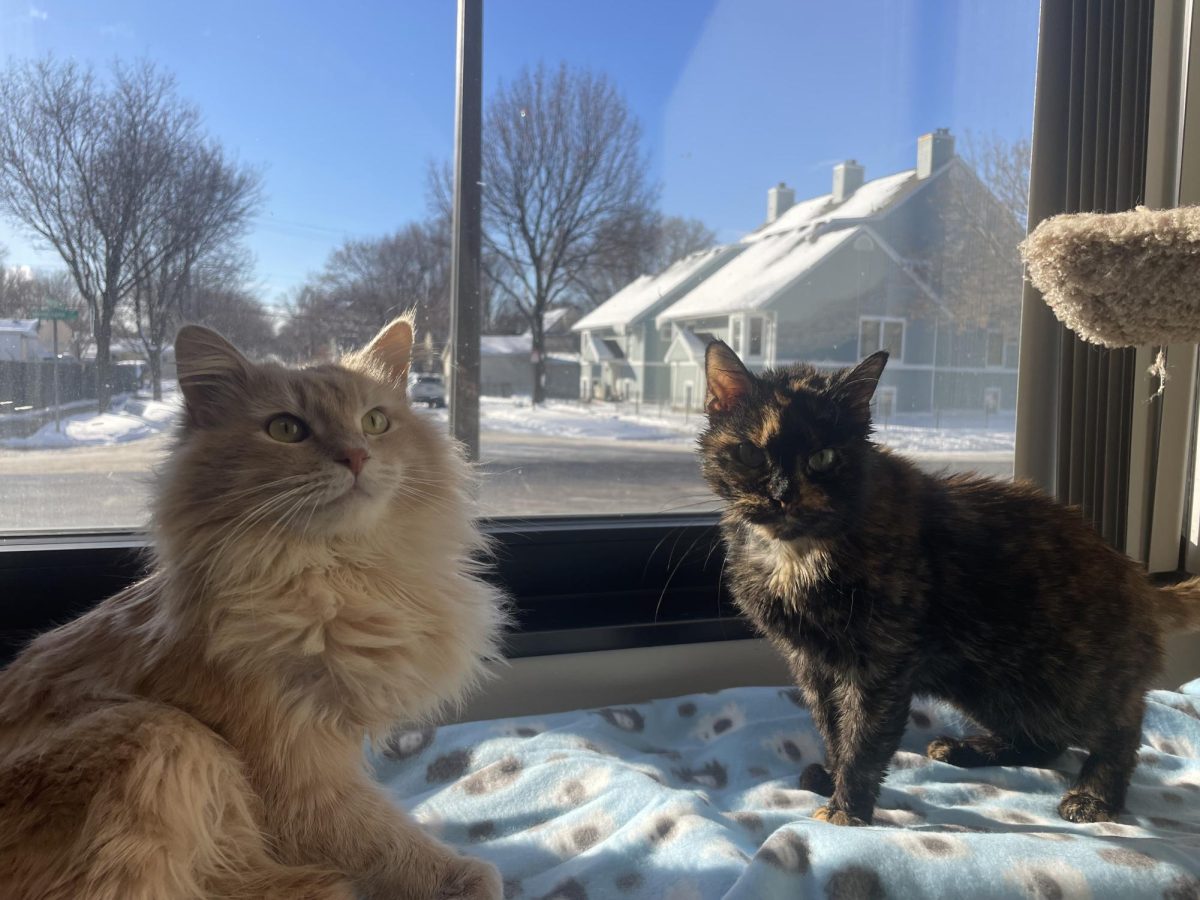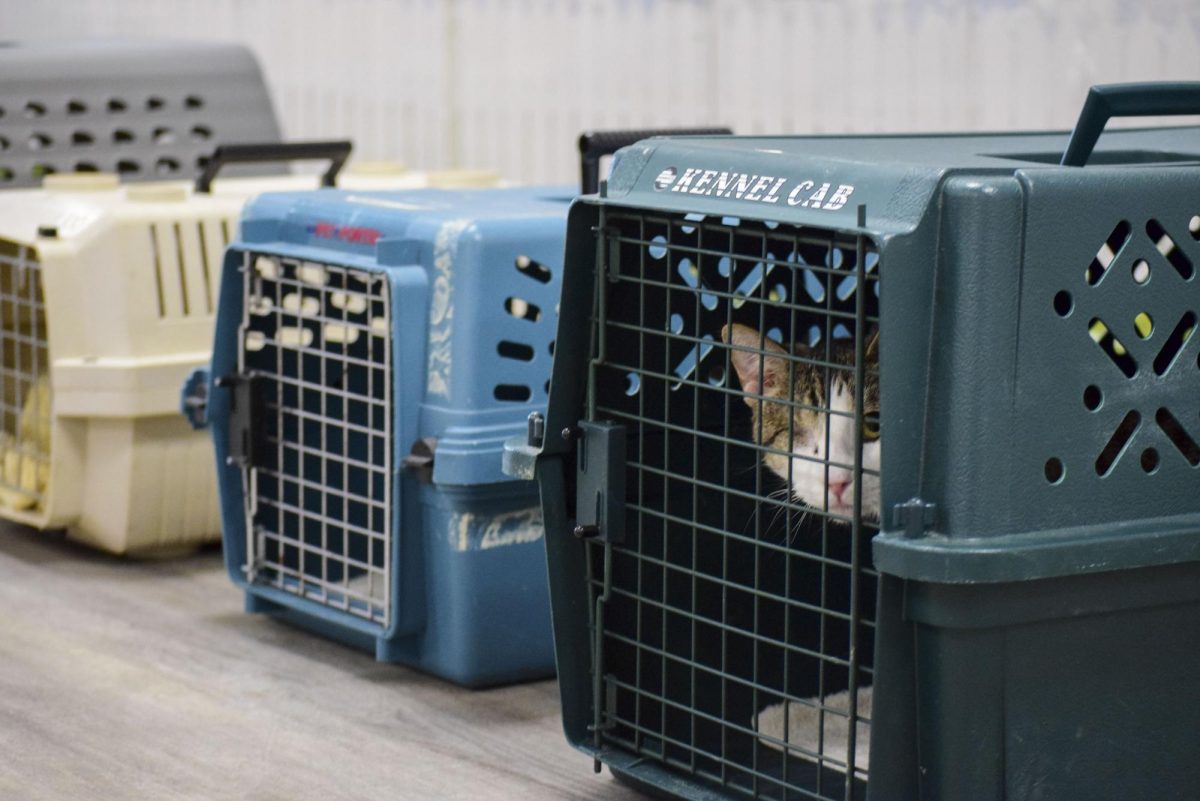As the Minneapolis Animal Care and Control (MACC) shelter reaches capacity, the city is investing more than $600,000 to alleviate strains on the shelter’s animals and employees.
The investment comes as a boost to the funding MACC already receives from the city each year. $365,000 of the investment is intended for hiring animal care technicians, a customer service representative and purchasing food and supplies for the animals, according to Minneapolis Mayor Jacob Frey. The other $250,000 will go toward facility renovations.
MACC has also waived its adoption fees and reduced the licensing, puppy and kitten fees for Minneapolis residents to encourage adoptions.
Frey said he sees this investment benefitting the productivity of the MACC shelter and the animals, hoping the shelter stay and adoption cycle becomes an ever-shorter process.
“We want all of these animals to get adopted by loving families and so long-term, we are quickly cycling animals through MACC and finding forever homes long-term,” Frey said.
MACC took in 25% more cats and dogs in the first half of 2023 than in the first half of 2022 and 78% more than in 2021, according to reporting by Axios.
Enrique Velazquez, the executive director of Regulatory Services for the city who oversees MACC functions, said the shelter is under pressure from not only an increase in animals but also the severity of the animals’ conditions and care needs.
“We’re seeing a lot more nuisance, a lot more neglect, a lot more maltreatment or even malnourishment cases and it’s those specific types of situations that, aside from the pure number of animals, it’s the level of care we have to provide in these very severe cases that takes up our capacity,” Velazquez said.
Full-capacity shelters are not isolated events, but rather the result of a trifecta of issues: an influx of out-of-state animals brought into Minnesota, the surrenders of adoptions made during the COVID-19 pandemic and the affordable housing crisis, according to Kerry D’Amato, the executive director of Pet Haven, Minnesota’s first foster-based animal rescue.
Nationally, more than 23 million households adopted a pet during the pandemic, according to data from the American Society for the Prevention of Cruelty to Animals.
Frey said full-capacity shelters can be attributed to many people realizing the pet they adopted during the pandemic is unfit for their home in post-pandemic life.
“For a bit of camaraderie and friendship, a whole lot of people went out and got a dog or a cat,” Frey said. “It worked while they were hanging out at home but it didn’t necessarily work once the world opened up again.”
D’Amato said considering these factors, she and others working in pet adoption and sheltering are seeing surrendered and abandoned pets “on an epidemic level.”
“We are seeing abandonment at a rate that we have not seen in a decade, we’re seeing stray pets outside at a rate that we haven’t seen in a decade, we are seeing puppies in plastic tote bins left on the side of the road,” D’Amato said. “That’s not something we’ve seen since the eighties, really, and that is a direct result of a lack of services.”

Dulce Garcia, a recent University of Minnesota graduate, and her roommates have been foster pet parents through Pet Haven since the fall of 2023.
Garcia said she and her roommates decided to start fostering with Pet Haven because it would alleviate some of the financial burdens of pet ownership without losing the pet.
“We decided to foster instead of just adopt because being a college student, having a pet can be really expensive with vet bills, buying their food,” Garcia said. “It was definitely a more affordable alternative and still being able to have the cat.”
Velazquez said that for many victims of the affordable housing crisis, choosing between a home and their pet becomes an unavoidable decision.
“We see instances where people are making that decision between sheltered and not sheltered and in order to move themselves into a shelter or move themselves into a home they have to surrender their animals as well,” Velazquez said.
General Manager Elissa Alfahed of The Cafe Meow, a cat adoption facilitator and cafe in Roseville, said the issue of at-capacity shelters impacts the work of The Cafe Meow.
“We do have quite a few calls from people that are like, ‘Hey, this shelter is at its maximum capacity, they’re gonna shut down. Do you have any space for them?’ Alfahed said. “I’m like, ‘Oh, we’re just a cafe, we can’t take cats but we can give you our resources, of all of our rescues that we work with.’”
D’Amato said that while municipal shelters like MACC do life-saving work for animals, they remain at the mercy of city budgets and resources, making it difficult to productively handle max-capacity issues alone.
“The municipal shelters don’t have the time, they don’t have the resources and they don’t have the environment to effectively rehabilitate a pet that needs more care. They just don’t,” D’Amato said. “They have limited capacity, and that’s where the support of foster-based rescue groups is so key.”
Both Alfahed and Garcia are glad the city’s investment in MACC will provide necessary resources to help aid in animal care, but they maintain concerns about removing financial barriers to adoption and the cycle of adoptions and potential abandons.
“I hope it doesn’t have another negative [impact] where we have a bunch of people adopting a bunch of cats and then abandoning them again,” Alfahed said. “There’s just so many more resources for them to adopt cats that weren’t there before because of all of this money that’s getting put into it.”
Garcia said the zero-dollar adoption fee might come at a risk.
“I don’t think I completely agree with making the adoption fee $0. That kind of lets anyone get a pet and you don’t necessarily know how they’re going to end up treating the pet,” Garcia said. “If it’s an adoption fee that’s stopping you, then how is that going to end up?”
Garcia added that rather than clearing shelters, she hopes future funding will be put into public, free care options for pet owners with difficulties caring for their pets and to help them maintain ownership.
“In Minneapolis too, I know that it’s just a struggle too because there’s also people struggling, living on the streets who also have pets with them,” Garcia said. “I feel like there needs to just be better care for animals available, like free care [so] everyone who has a pet is able to consistently take care of them.”
D’Amato said creating more affordable care and affordable housing are two sides of the same coin when it comes to absolving the pet sheltering and adoption systems of overwhelming occupancy.
“This pet has a loving, caring home and it can’t stay because people can’t find affordable housing. Those pets should never, ever, ever be entering into the system,” D’Amato said. “Then there’s the people who can’t afford veterinary care and have to give up their pet because of something like that, and those two pieces, affordable care and affordable housing, we have to, as a community, as a nation, we have to figure this out.”
While at-capacity shelters remain entangled in other ongoing social dilemmas, Velazquez is confident the mayoral investment will positively impact MACC on both a short- and long-term basis.
“We’re hopeful that with the robust foster program, with all these different changes to make it easier and more efficient for people to come in and adopt animals, that we will continuously have capacity on an ongoing basis without these different types of ‘hurry up’ events,” Velazquez said.















